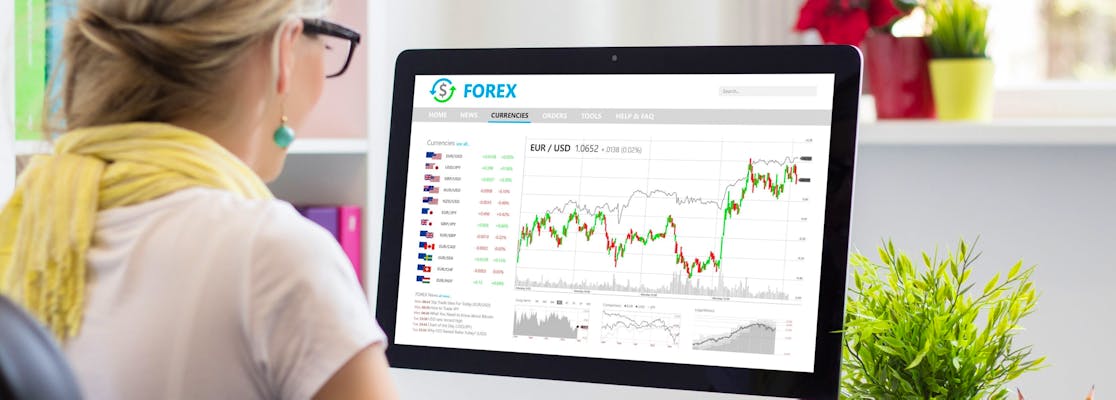Martingale Strategy in Forex Trading (2025 Guide)
All products and services featured are independently selected by WikiJob. When you register or purchase through links on this page, we may earn a commission.
61% of retail investor accounts lose money when trading CFDs with eToro. You should consider whether you understand how CFDs work, and whether you can afford to take the high risk of losing your money.
- A list of the Top Forex and CFD Brokers for January 2025:
- Description of the Best Forex and CFD Brokers for January 2025
- What Is the Martingale Strategy?
- How Does the Martingale Strategy Work in Forex Trading?
- Is the Martingale Strategy Profitable?
- How to Use the Martingale Strategy
- What’s the Reverse Martingale?
- What Are the Risks of Using the Martingale Strategy?
- Frequently Asked Questions
- Final Thoughts
A list of the Top Forex and CFD Brokers for January 2025:
Description of the Best Forex and CFD Brokers for January 2025
1. Pepperstone
Pros
- Extensively regulated
- No minimum deposit
- Low fees and mostly free withdrawals
- Good customer service
Cons
- No investor protection for clients outside UK, EU and EEA
- Withdrawal fee for international bank wires
- CFDs only
When using the Martingale Strategy with Pepperstone, traders must be aware of both its potential benefits and significant risks.
Pepperstone offers advanced trading platforms like MetaTrader 4 (MT4), MetaTrader 5 (MT5), TradingView and cTrader, which support the implementation of automated trading strategies, including the Martingale strategy.
These platforms provide powerful tools for technical analysis, automated trading via Expert Advisors (EAs), and the ability to backtest strategies on historical data.
The Martingale strategy can be automated using EAs on MT4 and MT5 or through cTrader Automate (formerly cAlgo). These platforms allow traders to program their trading bots to execute the Martingale strategy, doubling the position size after each loss and resetting after a win.
Automation is crucial for the Martingale strategy, as it requires precise and rapid execution of trades, which is facilitated by Pepperstone's fast execution speeds and low latency.
While the Martingale strategy aims to recover losses, it can lead to substantial drawdowns and potentially wipe out trading accounts if not managed properly.
Pepperstone provides various risk management tools such as stop-loss orders and negative balance protection. These tools help limit potential losses and protect traders from extreme market movements.
Pepperstone offers tight spreads and low commissions, which are beneficial for executing a high-frequency trading strategy like Martingale.
Lower trading costs can help mitigate some of the risks associated with the strategy, as frequent trading with larger positions can incur significant costs over time.
2. eToro
Pros
- Regulated by FCA, ASIC
- No withdrawal fee for US clients
- 0% commission on stocks
- Social and copy trading
Cons
- Not available in every US State
- More expensive than most of its competitors
- No MetaTrader platforms
Below content does not apply to US users
Founded in 2007, eToro is considered a very low-risk broker as it is highly regulated by the Financial Conduct Authority (FCA) in the UK and many other regulatory bodies elsewhere.
Opening an account is free and you can access a $100,000 demo account to test the system.
It offers 47 currency pairs for trading. Spreads for forex trading have recently been significantly reduced and range from a very competitive 1 to 3 pips for major currency pairs.
Typical spreads for EURUSD and USDJPY trades, for example, are just 1 pip.
You can see the full list of spreads on the eToro website.
You’ll need to deposit a minimum of $200 for Copy Trading, eToro's standout feature which allows you to follow other traders and copy their trades.
This forex broker is great for beginners due to its user-friendly interface and app and 24-hour customer support. It allows you to trade currencies, stocks and cryptocurrencies in one portfolio and the Copy Trading system is a great way to learn.
The company also offers trading courses and features a Learning Lab which houses a variety of tools to support clients with their trading experience.
To find out more, read our eToro review.
61% of retail investor accounts lose money when trading CFDs with eToro. You should consider whether you understand how CFDs work, and whether you can afford to take the high risk of losing your money.
3. Plus500
Pros
- No buy/sell commissions and tight spreads
- Leverage of up to 1:30
- FREE unlimited Demo
- 2,800+ trading instruments
- Real-time quotes and advanced analytical tools
- Fast and reliable order execution
Cons
- No API integrations
- No social copy trading
Plus500 is a CFD provider and offers only CFDs.
Another user-friendly entry on our list of the best forex and CFD brokers in the UK is Plus500, providing an easy-to-use and accessible service.
You’ll find over 60 CFD currency pairs with competitive spreads, no commission and available leverage of up to 1:30.
Although MetaTrader and cTrader are not available, Plus500’s own platform is very user-friendly. It comes with a range of intuitive risk management features and is available on web and mobile.
Plus500 requires a minimum deposit of £100 if using a credit or debit card, and £500 if using bank transfer.
Plus500 UK Ltd authorized & regulated by the FCA (#509909).
4. IG
Pros
- Highly regulated
- MetaTrader 4 (MT4)
- Over 10,000 instruments
- Available in the UK and US
- 24/7 customer support
Cons
- High fees
- No deposit compensation scheme for US accounts
- No copy trading
- Inactivity fees
IG is a great share trading platform for beginners thanks to its user-friendly interface and extensive educational resources.
Pros of IG include a wide range of trading instruments and markets, as well as the ability to access multiple account types and trading platforms. The platform also offers a demo account for beginners to practise trading strategies before investing real money.
However, IG isn’t the cheapest share trading platform, with relatively high trading fees and a minimum deposit requirement of £250 when paying by credit/debit card or PayPal.
In terms of additional fees, IG charges a commission fee for share trading, starting from £8 per trade. There’s also a custody fee of 0.25% per year for holdings of £250 or more.
Overall, IG is a solid choice for beginners looking for a user-friendly platform with extensive educational resources, but investors should be aware of its fees and minimum deposit requirements.
Are you a broker looking to home in on a forex trading strategy that is renowned for almost always being profitable? If so, the Martingale strategy could be just the system for you.
In this article, we explore the origins of the Martingale strategy (or Martingale system), why it’s almost a sure bet and whether it’s worth the risks and rewards.
What Is the Martingale Strategy?
If you’re already familiar with forex trading, you may have heard of the Martingale strategy being referred to as the ‘zero expectation scenario’.
Essentially, when you engage in a Martingale strategy, you double your trade size every time you face a loss. The idea is to bet with a 50% probability of having a successful trading outcome.
Although it may not sound particularly French in origin, the Martingale strategy started as a class of betting tactics commonplace in 18th-century France. It was introduced by mathematician Paul Pierre Levy as a ‘doubling down’ betting strategy.
In fact, you may have already played a Martingale strategy without knowing. A simple one is the famous heads or tails coin flip.
The gambler wins when a coin lands heads up and loses if it comes up tails. The gambler doubles their bet every time the coin lands tails up. The idea is that the first win would be substantial enough to cover other losses within the bet.
The chances are that the gambler will eventually flip the coin so that it lands heads up. The downside, of course, is that the gambler must have the funds to continue to a satisfactory outcome, much like forex trading.
In a game of heads or tails, the gambler will not have an infinite amount of funds to bet with, and with that comes a risk of bets becoming bankrupt, hence term zero expectation.
The expected value is zero because there is a 50% probability with each bet. Today, almost every casino across the world applies the Martingale strategy to bets.
How Does the Martingale Strategy Work in Forex Trading?
In a Martingale trading strategy, the trader increases the amount allocated for investments, even though its value may be falling, with the view that there will be a future increase.
The strategy is no way near as simplistic as a game of ‘heads or tails’, though. The Martingale strategy has been modified several times for trading so that they are not quite zero-sum strategies.
Let’s examine the following example. A trader decides to test the waters with a Martingale strategy, and they purchase company shares to the value of $20,000 when it is trading at, say, $200.
The stock price of those shares then falls over the coming days, and the trader decides to purchase $40,000 worth of shares at $100, and the average share price goes up to $120.
Again, stock prices fall, yet the trader doubles their purchase again to $80,000 at $50 per share.
Now, the average price per share has reached the point where it is just below the trader’s initial bet size ($39.20), meaning the profit now equals their initial investment. The trader then waits for the stock to move to $39.20 and gains a profit of $20,000, which is the size of the initial bet.
In the scenario above, the trader ceases trading after their third round of bets and still breaks even.
However, this does not always happen and is an example for a very good reason. Trade sizes deploying a Martingale strategy can reach quite a considerable sum in the hope of recovery. That’s why it’s important that traders take risks they can afford.
This is all well and good for general trading, but is the Martingale strategy profitable for forex trading?
The answer is yes, it can be, but as with all trading strategies, it is not without its risks (more on this later).
Let’s consider the forex trading scenario. In forex trading, you’re trading currencies, and so the trends typically tend to be long term. So when your trades are on the up, it can last a while.
With a forex Martingale trading strategy, you essentially lower your average entry price every time you double your bet.
For example, you need to rally two lots of Euros (EUR)/US dollars (USD) from 1.181 to 1.182 to make sure you do not fall short of your initial trade.
Then, as the exchange rate lowers, you ‘double down’ and purchase four lots. You now need 1.8095 instead of 1.182.
As a rule, within Martingale forex trading, you draw down the average entry price each time you double your lots. However, as we have all seen during a global pandemic, the strategy is not without risks, as currency markets remain volatile.
Is the Martingale Strategy Profitable?
The answer to this question largely depends on who you ask and when.
It’s widely accepted that Martingale trading does not perform very well in trending markets in the long run.
Low returns mean that the trade size needs to be substantially bigger than capital for carry interest to be truly successful. This is very risky business with the Martingale betting system.
That said, the Martingale strategy is less precarious in forex trading than it is in stock markets. The reason for this is that currencies very rarely drop to zero. Although, a currency may fall in value, which can be quite sharp and unexpected.
The forex market can be quite attractive to Martingale betting system traders who have considerable capital. They can use earned interest to compensate for some of their losses while waiting for a trade to turn in their favor.
The advanced Martingale trader will usually use the Martingale system in the positive carry direction of currency pairs. They enter a positive carry on the theory that the currency at a higher interest rate will either remain static or appreciate.
Essentially, they are doing what they can to try and influence a successful Martingale strategy by trading currency pairs with large interest rate variances.
How to Use the Martingale Strategy
The strategy behind Martingale trading is quite simple. In trading terms, it’s a form of negative progression that involves upping (in this case, doubling) your position size every time you make a loss. Eventually, you end up recouping your initial bet.
If you are trading on a forex platform, you will need to do your research to identify the currency pairs you wish to trade on, initially with small lot sizes.
Using a reputable forex trading platform, open your trade by setting your profit and stop loss. Next, you’ll need to wait for the trade to take place.

If you lose, you double your trade size and continue with this strategy until you make money.
Given that the Martingale betting system is not without its risks, there are a few things that you can do to improve your chances. These are:
-
Take the time to familiarise yourself with Martingale forex trading by practicing with a demo account. You will get to practice trading in a real environment without taking any risk.
-
Keep your ‘doubling down’ to a minimum. Try not to exceed more than five trades. However, this primarily comes down to funds and individual risk.
-
Try and use the Martingale strategy within a ranging market where the chances of being stuck within a currency pair trend for an extended period is less.
-
Most importantly, always specify the maximum loss you are prepared to take per trade (make sure you set your stop-loss).
-
Keep the size of your trades proportionally small in comparison to your capital. This may feel unnatural for a trader, but it’ll enable you to endure the higher trades later in the cycle.
What’s the Reverse Martingale?
Now that you’ve grasped the concept of the Martingale betting system, you might want to explore the reverse Martingale strategy in forex trading.
For want of a better description, the reverse Martingale is the anti-Martingale method. Instead of doubling a bet with each loss, you halve a bet every time there is a trade loss and double it each time you make a gain. It’s quite literally the opposite of the Martingale strategy.
How is it different from the standard Martingale trading system? Well, it’s supposed to amplify winning. It enables a trader to take advantage of their winning trend by doubling their position.
The reverse Martingale technique is often used by experienced traders who want to capitalize on their position by doubling up on a few winning trades before there’s a downturn.
When there is a loss in a reverse Martingale forex trade, a bet is essentially halved. This means that the trader applies a stop-loss Martingale system, which is generally accepted as a more prudent strategy.
What Are the Risks of Using the Martingale Strategy?
The Martingale strategy is known to improve a forex trader’s chance of winning. However, it also has several drawbacks that make its use less appealing. For a start, the amount risked on a trade is exponentially higher than the gain.
In no time at all, trading can reach staggeringly high proportions using the Martingale strategy. If a trader runs out of funds, which can and does happen, and they exit a trade while on a downward turn, the losses can be incredible.
If you think about the risk-to-reward value of Martingale trading, its rewards are not that appealing, even if the probability of losing is low. This is because even though you may be raising your stakes at every bet, which can run into the many thousands, your final profit is only ever equal to the initial bet.
Moreover, you’ll have transactional costs to consider too, which you’ll have with every trade you make. So technically, even if you break even, you will have ‘lost’, even if it’s by a small margin.
Martingale strategy is a popular money management technique used in trading. It involves doubling the size of a trading position after a loss with the aim of recovering previous losses and making a profit.
The strategy is based on the assumption that a trader will eventually win, and when they do, the profits will cover all previous losses.
The Martingale strategy works by increasing the size of a trading position after a loss, which can lead to exponential growth of the position size.
For example, if a trader loses $10 on a trade, they will double their position size to $20 on the next trade. If they lose again, they will double their position size to $40 and so on.
The strategy aims to recover previous losses and make a profit when a winning trade is eventually made.
It is possible to use the Martingale strategy in forex trading, but it is not recommended.
Forex trading involves high risk, and the Martingale strategy can lead to significant losses if the trader experiences a series of losing trades.
The strategy is also heavily reliant on having a large account balance to sustain the increasing position sizes, which is not practical for many traders.
The efficiency of the Martingale strategy in trading is a topic of debate. While it can be effective in recovering losses in the short term, it can lead to significant losses in the long term if a trader experiences a string of losing trades.
It is important to note that the Martingale strategy is not a reliable way to consistently make profits in trading.
There is no specific trading platform that is best for implementing the Martingale strategy. The strategy can be applied on any trading platform that allows for flexible position sizing and offers stop loss and take profit orders.
To implement the Martingale strategy in trading, a trader should first determine their risk tolerance and account balance.
They should then set a fixed percentage of their account balance to use as the base trade size.
If the trade is a loss, the trader should double the trade size for the next trade. If the trade is a win, the trader should return to the base trade size.
It is important to use stop loss orders to manage risk and prevent significant losses.
One of the most common mistakes to avoid when using the Martingale strategy is increasing position sizes too quickly. Traders should have a solid understanding of their risk tolerance and use stop loss orders to prevent large losses.
Another mistake to avoid is assuming that the strategy is foolproof and can always recover losses. The Martingale strategy is a high-risk technique that should be used with caution.
The Martingale strategy can be used in combination with other trading strategies, such as trend following or breakout strategies. However, it is important to carefully consider the risks and use proper risk management techniques when combining strategies.
The success rate of the Martingale strategy in trading is difficult to determine as it depends on various factors such as market conditions, trading style and risk management techniques.
While the strategy can be effective in the short term, it is not a reliable way to consistently make profits in trading.
The Martingale strategy is not recommended for long-term trading as it is a high-risk technique that can lead to significant losses over time.
It is important for traders to use a variety of trading strategies and risk management techniques for long-term success.
The Martingale strategy is not recommended for beginner traders as it is a high-risk technique that requires a solid understanding of risk management and market analysis.
Beginner traders should focus on developing a strong foundation in trading basics and risk management before attempting to use advanced techniques such as the Martingale strategy.
The main limitation of the Martingale strategy in trading is its reliance on a large account balance and the assumption that a trader will eventually win.
It can also lead to significant losses if a trader experiences a series of losing trades.
Additionally, the strategy does not take into account market conditions or changes in market trends, which can lead to poor performance over time.
Final Thoughts
Regardless of its inherent risks, the Martingale strategy certainly has its place in forex trading. Many highly experienced forex traders have dabbled in Martingale trading and have gained a tremendous amount of market insight in the process.
If you want to explore the Martingale forex approach fully, the best place to start is with a demo account on a forex trading platform. Then, you will be able to test your knowledge and strategies in a risk-free trading environment.
Remember, the Martingale system does not increase your chances of winning. Usually, your return will eventually be the same as what you invested.
As with any forex trading, your success is dictated by your ability to identify trades on currency pairs, and there’s no way of sidestepping that.
Our advice with any new trading strategy is to do your research. Take up the demos, find the right platform for you, engage in courses, listen to podcasts, speak with experienced traders and read as much as you can.
Most importantly, know the level of risk you feel most comfortable with!
WikiJob does not provide tax, investment, or financial services and advice. The information is being presented without consideration of the investment objectives, risk tolerance, or financial circumstances of any specific investor and might not be suitable for all investors. Past performance is not indicative of future results. Investing involves risk including the possible loss of principal.
61% of retail investor accounts lose money when trading CFDs with eToro. You should consider whether you understand how CFDs work, and whether you can afford to take the high risk of losing your money.






